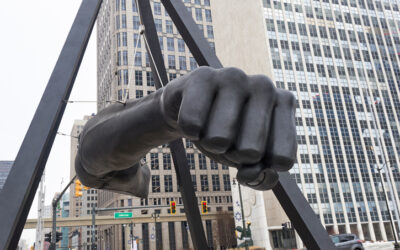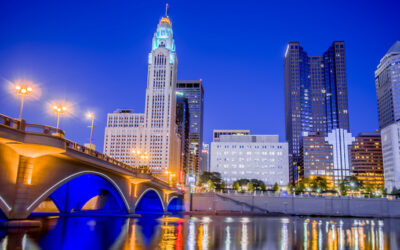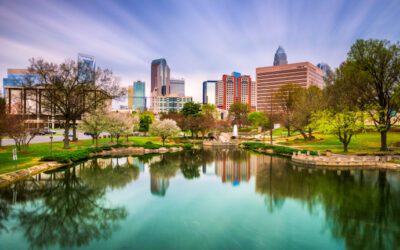If you are considering a move to Milwaukee, you’ve probably done a lot of searching online for answers to your most pressing questions.
To save you time, we went ahead and compiled the answers to the most searched for questions about Milwaukee below:
1. What does the MECCA in Milwaukee refer to?
so cool last night throwback to 70s #NBA with the #mecca floor paint at Milwaukee — revisit the 30f30 short about it https://t.co/CoWY3JnH3j pic.twitter.com/hjFS6vXQqV
— Oswaldo Jimenez (@oswjim) October 27, 2017
Opened in 1950 and originally dubbed the Milwaukee Arena, the indoor sports facility was built for sports broadcasting and was the home to the Milwaukee Bucks for 20 years. The MECCA (Milwaukee Exposition Convention Center & Arena) got its catchy name in the early ‘70s when it became more of a multi-use space. Famed for its iconic Robert Indiana art work, the MECCA was known for its eye-catching basketball floor.
https://www.youtube.com/watch?v=gGWF8HdJkhY
With the Bradley Center taking shape in the late ’80s to hold nearly double the occupancy, the Bucks got a new home and the MECCA became home to smaller sporting events. Now the UWM Panther Arena, if you say you’re going to the MECCA, to this day, people will know what you’re talking about.
2. Why is Milwaukee so dangerous?
“With isolation, poverty, and political impotence on top of each other, that produces a series of cultural responses that can, in a variety of ways, intensify people’s economic hardship and can also contribute to criminality and gang formation,” says Brooklyn College sociologist Alex Vitale.
Milwaukee is the number one segregated city in the country, sadly. Like most cities, violence is contained to a few areas of the city limits, but is not everywhere.
3. Why is Milwaukee called The Good Land?
According to the Visit Milwaukee website, “Long before the first settlers came to this area, the Algonkian Indians had a special name for the land: Millioki, which means “gathering place by the waters.”
Milwaukee is a delta to three rivers flowing into Lake Michigan–the Menomonee, Kinnickkinnic and Milwaukee–and along the banks, a location where tribes would meet. While Native Americans did not write these names down, leave it to the early European settlers to take the idea of respecting the original tenant and create a phonetic spelling for the city’s name.
Of course you would know all this already is you ever saw Wayne’s World:
4. Why is Milwaukee so cold?
A #snowy scene from #mke #localhistory during the #mpmstreets. Ice harvesting is difficult, #cold work, but all of #milwaukee certainly appreciates it when we're able to enjoy a cold drink in the middle of #summer! #thankyou #history #iceicebaby pic.twitter.com/OgFIFK1MpX
— Granny (@MPMgranny) January 24, 2018
Well, bluntly, you’re in the upper Midwest. The home of “Clippers” (not the basketball team), the weather trends of a lowering jet stream from Alberta, Canada provides incredible bursts of cold air from November to March. Cold air mixed with wind gusts bringing the “feels like” or windchill temperature much lower than the actual. Snow is often accompanied.
Milwaukee records an average of 54” of snow over a winter season, thanks to those low pressure systems and circling fronts over the lake, providing lake-effect snow on occasion. Just get a good coat and if you’re too afraid to drive, call an Uber. You’ll be fine.
5. Why is Milwaukee called Cream City?
Do you know why #MKE is called the Cream City? It's actually in reference to the beautiful architecture! #SWRealtors https://t.co/QF3C6WTMZ7 pic.twitter.com/dISt2mqmow
— Shorewest, Realtors® (@Shorewest_RE) July 23, 2017
Step into some of the older neighborhoods in this city and you’re bound to notice the subtle tones of cream-colored brick used to build the city’s oldest buildings in the dawn of the city’s existence. Using red clay found along the banks of Lake Michigan or the Menomonee River Valley, the lime and sulfur in the clay gives it a creamy color when dried and with the elements, can look a tad dirty.
The Milwaukee Art Museum Library (pictured at top) is a stunning example of what a well-maintained Cream City Brick facade can bring to a neighborhood. On the National Register of Historic Places, the three-story Judge Jason Downer mansion was designed by architect Edward Townsend Mix and built in 1874.
6. Why does Milwaukee smell bad?
https://twitter.com/steinbring/status/766694050648977408
It should be mentioned that the city as a whole does not smell, but depending on where you are, your nose knows that scent is not normal. As the Dairyland State may suggest, you’d suspect that the smell is dairy farms. That may be in rural areas, but not in the Milwaukee Metro area.
Like many lakeside communities, many have a distinct smell during the thawing or humid months. Lake Michigan, when the wind is out of the east, can give nearly the entire city a scent of freshwater and seaweed. I rather like it. I think it reminds me that summer is near or here. Reminds me of “home.”
The other smells, however, can be a little less pleasant. A water treatment plant located just north of Bradford Beach can provide a rather dank tinge to your nose in the heat of summer. That, should be smelled in every city that is treating the water, however. It’s inevitable.
Milwaukee also is home to the Milorganite (fertilizer) packaging plant, along the industrial waterways just north of Bay View. If you’re taking a trip over the Hoan Bridge, you may smell something a tad funky for about half a mile.
Featured photo courtesy of The Milwaukee Art Museum.



